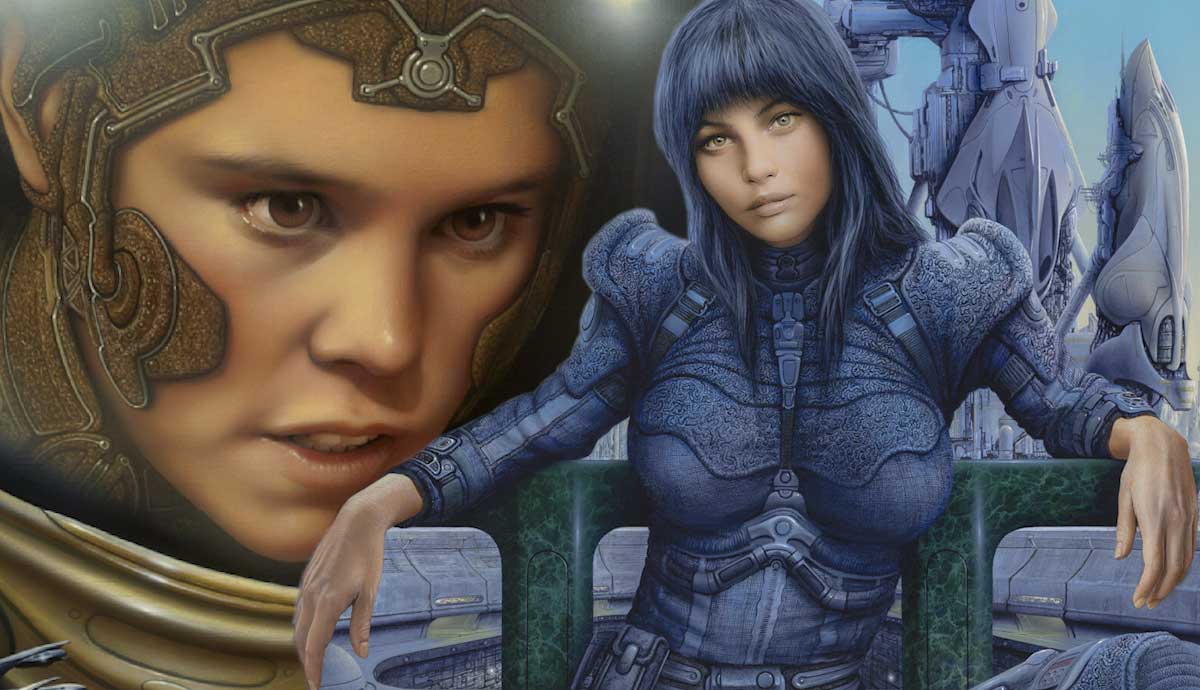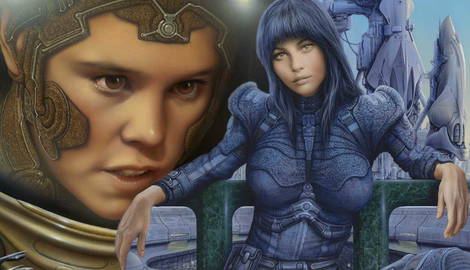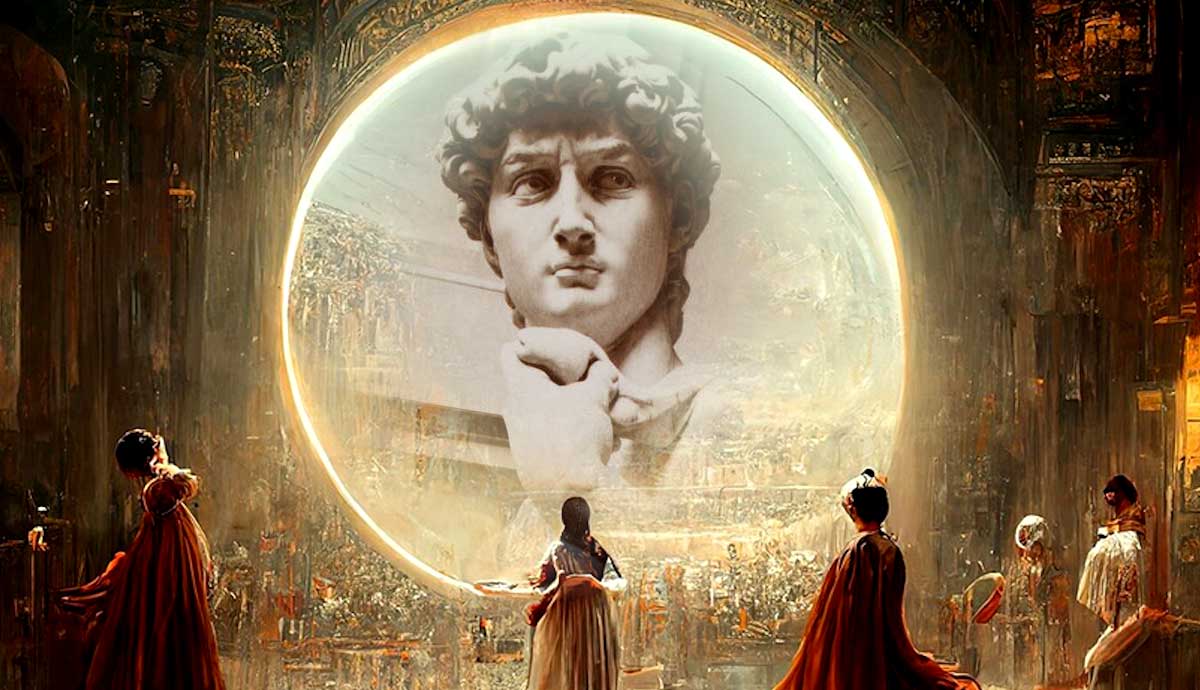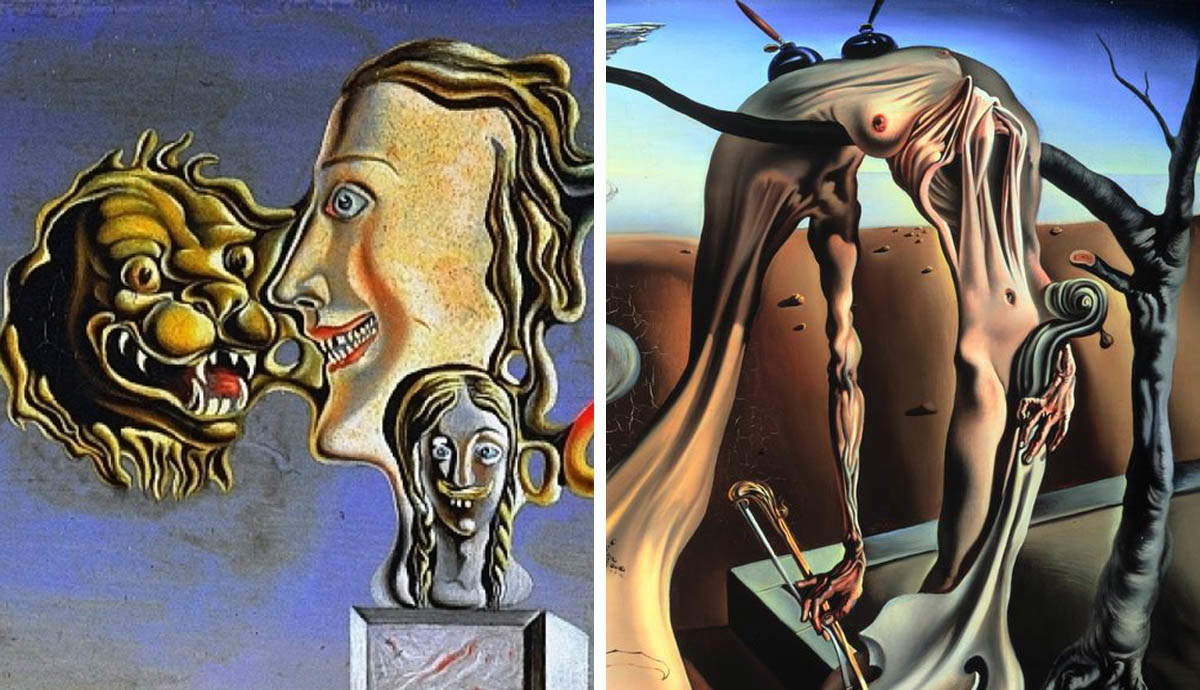
The commercial success of the science fiction genre has spawned many thousands of artists who define themselves as focusing on science fiction themes. From the era of Jules Verne to the present day, the list of science fiction artists has become impossibly long. And with so much talent and skill everywhere, it is difficult to select a few and label them as the best in their field without feeling as if you’ve been harsh to so many others. The process also includes omitting science fiction artists who are more well-known for their fantasy themes.
Nevertheless, there are artists who have established themselves as masters of the genre through their skill and commercial success. Here are 5 of the most popular artists who focus on creating engaging works of science fiction.
1. Jim Burns

Born in 1948 in Wales, Jim Burns has been called one of the “Grand Masters” of science fiction art. At the age of 18, he joined the RAF, where he flew as a trainee pilot. After two years in the force, he decided that being a pilot wasn’t for him, and he went off to study art instead. This turned out to be a very good decision. In 1968, he started a 3-year Diploma in Art & Design at St. Martin’s School of Art. He was still studying when he received his first commission in 1972.

Using a variety of techniques, including digital, his work has graced the covers of hundreds of novels within the wider genre of “fantastical art.” Nevertheless, he is known specifically for his science fiction, a common theme of his being beautiful women against the backdrop of spaceships or other advanced machines. In recent years, he has moved away from the world of publishing, and although he still accepts private commissions, his work has become more personal.
During his career, he has won the Hugo award for best professional artist three times and has received 12 BSFA (British Science Fiction Association) awards. He also worked on the movies Blade Runner and The Chronicles of Riddick.
2. Chris Moore


Born in South Yorkshire in 1947, Chris Moore wanted to work as a commercial artist from a very young age. He attended Doncaster Art School, and from 1966 to 1969, he attended Maidstone College of Art. He was then accepted by the Royal College of Art to study illustration, and it was during this time that he received his first commissions.
He worked on book covers as well as numerous album covers, creating famous designs for Fleetwood Mac, Status Quo, Rod Stewart, Journey, The Allman Brothers, and many others. It wasn’t until 1974, however, that Chris Moore started creating science fiction art. Although he became immensely famous as a science fiction artist, he continued to create more mainstream art.


With his work being described as “high-tech and high-sheen,” his art graced the covers of famous science fiction authors such as Larry Niven, Arthur C. Clarke, Kurt Vonnegut, Frederik Pohl, and Isaac Asimov. It also graced the covers of mainstream books by Jeffery Archer, Frederick Forsyth, Jackie Collins, Wilbur Smith, and Colin Forbes.
Chris Moore represented a wide variety of publishing houses in Britain, and in 1984, he visited the United States, gaining work and fame from the other side of the Atlantic. Although his attempt to work on movies came to naught, he has continued to create vast quantities of art, and his artwork is arguably on the covers of more science fiction stories than any other artist. At a book launch in 2004 by Orion Publishing, more than two-thirds of all the releases had covers created by Chris Moore. He is undoubtedly one of the most sought-after science fiction artists of our time.
3. Chris Foss

With his incredible skill with the airbrush and his iconic images of spacecraft, Chris Foss is recognized as one of the world’s greatest science fiction artists. Born on the Channel Island of Guernsey, less than a year before the end of the Second World War, Chris Foss’ childhood was influenced by the imagery of German fortifications, warning signs, and razor wire left by the German occupation. These concrete towers and bunkers would go on to become a recurring theme in Foss’ work.
He began his education in art at a boarding school in Dorset, where his artistic talents were much encouraged. He fell in love with the western genre of cowboys, dusty trails, and wide open spaces. He describes some of his later science fiction art as being science fiction versions of western scenes. As science fiction films became sleeker, with bigger production values, Chris began to respect and love the genre. Chris was also fascinated by war machinery, another theme that shows up in his art.

He was captivated by Stanley Kubrick’s 2001: A Space Odyssey and noted the sharpness of the light, the smooth curves of the spaceships, and how they were contrasted against the vast blackness of space. When one browses through Chris Foss’ art, it’s easy to see the influence this film had on him. The respect came full circle when Chris was asked to work on Stanley Kubrick’s AI.
Chris Foss’ first commissions came in his early twenties, and he quickly became a prolific creator of book covers. He would paint up to three covers a week, infuriating the editors when it was clear he hadn’t read the book for which he was creating art.

His science fiction art became highly prized, which was a novelty for Chris. He had regarded his art as just another job, and after sending commercial commissions in, he sometimes didn’t even go back to retrieve them. The fan base that grew around his science fiction art, however, challenged him to create science fiction art for its own sake and to treat his own work as being highly valuable.
He created covers for Isaac Asimov’s Foundation Trilogy amongst a vast quantity of many others, and he worked on films including Alejandro Jodorowsky’s unfinished Dune, Flash Gordon (1980), A.I. Artificial Intelligence (2000), and Guardians of the Galaxy (2014). He also created art for Traveller, a role-playing game. In addition to his long list of credits, he also illustrated The Joy of Sex by Alex Comfort.
4. H.R. Giger

Among science fiction artists, H.R. Giger’s work stands out as an anomaly in terms of its distinctiveness. There is nothing similar to his work that is not directly inspired by it. His theme is cosmic horror, and his style is terrifyingly visceral and wholly unique. Although he worked on numerous projects, his fame skyrocketed with the movie Alien (1979), having designed the eponymous antagonist for the film, for which his design team won an Oscar.
Born in 1940 in Switzerland, his career started in architecture and industrial design. His family disapproved of him following a career in art, but he continued studying art at university. His dreams informed his art, and he kept a notebook next to his bed so he could record his nightmares which were then turned into paintings and sculptures. The surrealism in his art was partly inspired by Salvador Dali, with whom he was friends.

His early exhibitions were showcases of sex and death and drew much disgust from the local populace. This disgust continued well into his senior years, and exhibition venues often had to wipe the spit from their windows. In 1998, he opened the Gruyères Museum, which included a statue of one of his xenomorph creations outside. In 2005, he was forced to remove the statue as the town council believed it wasn’t good for the town’s image.

Melding flesh, bones, and machines in a surrealist dance of repetition and hideous horror, his disturbing and depressive (and often sexual) imagery was constantly accused of Satanic influence, yet the small-mindedness of his detractors paled in comparison with those who lauded his work with critical acclaim. He was a busy man, continuously being commissioned for books and films. He died in 2014 in Zurich after complications relating to a fall. He was 74 years old. His enigmatic art and the inspiration it has provoked live on.
5. John Berkey

Born in North Dakota in 1932, John Berkey was arguably one of America’s greatest science fiction artists, with a large corpus of work that inspired many other artists. He studied at the Minneapolis School of Art.
He originally worked for an advertising firm creating calendar paintings of American history before striking out on his own as a freelance artist. He worked for a number of publications, such as Popular Mechanics, Science Fiction Age, Omni, and National Geographic, before creating covers for paperbacks. His first commission in this field came in 1972 by designing the cover for the reprint of STAR Science Fiction. Following this success, he became known as a science fiction artist, creating covers for books written by Ben Bova, Isaac Asimov, Robert Heinlein, Glen Cook, and Philip K. Dick.

He also worked for NASA, creating concept art before moving on to movie posters. George Lucas hired him to work on Star Wars, and in 1976, Berkey created the first poster art for the franchise. Besides his science fiction art, Berkey also created several designs for US stamps.
He died in 2008 at the age of 75. His work has influenced many of the great science fiction (and other) artists in America, such as Vincent di Fate, James Gurney, and Drew Struzan.

Science fiction is a relatively new genre in the world of art. For a little over a hundred years, the genre has evolved to match the imaginations of science fiction artists who are informed by technological progress in human society. As such, the evolution of visual design has been unbelievably rapid.
Human interest in science fiction has also increased on an almost exponential scale and, as a result, has demanded the services of thousands of science fiction artists. Some of those artists became great masters in their field, and the future will, no doubt, generate many, many more.










